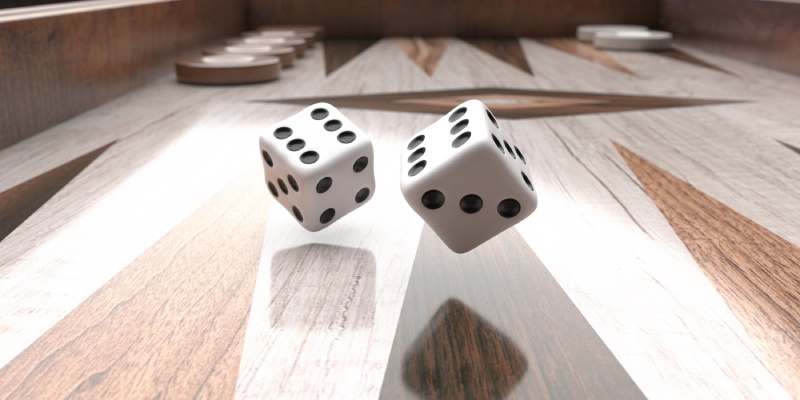Backgammon is a timeless board game that combines elements of strategy, skill, and luck. Understanding the rules is fundamental to enjoying and excelling at this classic game. In this comprehensive guide, we’ll delve into the intricacies of backgammon rules, guiding you through the setup, gameplay, and strategies necessary to become proficient in this captivating game.
Understanding the Backgammon Board
Before delving into the rules, let’s familiarize ourselves with the layout of the backgammon board.
- The Board Structure: The backgammon board consists of 24 narrow triangles or “points,” arranged in four quadrants. Each quadrant has six points. The board is divided into the home board and the outer board by a central bar.
- Home Board: Each player has their own home board, which is the section of the board closest to them. The points are numbered from 1 to 6, starting from the player’s nearest point.
- Outer Board: The outer board is the section closest to your opponent. Similar to the home board, the points are numbered from 1 to 6, starting from the point closest to your opponent.
- The Bar: The bar is the central division between the home and outer boards. It serves as a barrier and is used for bearing off checkers and resolving certain moves during the game.
Backgammon Set Up
Let’s walk through the process of setting up the backgammon board.
- Placing the Board: Begin by placing the backgammon board between the two players so that each player’s home board is on their right.
- Arranging the Checkers: Each player has 15 checkers of their color, either black or white. Place the checkers as follows:
- On your home board, position five checkers on point 24, two on point 13, three on point 8, and five on point 6.
- Your opponent should mirror this setup on their home board.
- Rolling the Dice: Each player should have two dice and a dice cup. Both players roll their dice to determine who goes first. The player with the higher roll gets the first turn.
- Starting the Game: Once the first player is determined, the game begins.

Backgammon Rules: How to Play
Understanding the rules of backgammon is essential for an enjoyable gaming experience. Let’s explore the rules step by step:
- Rolling the Dice: At the beginning of each turn, the player rolls both dice to determine how many points they can move their checkers. For example, if a player rolls a 3 and a 4, they can move one checker three points and another checker four points.
- Moving Your Checkers: Checkers can only move forward, towards the player’s home board, following the numbers rolled on the dice. A player can move one checker the sum of both dice or move two separate checkers. If both dice show the same number, the player can move four checkers according to that number.
- Blocking and Hitting: A player cannot land on a point that has two or more of their opponent’s checkers, known as a “point with two or more opposing checkers.” However, a player can land on a point with only one of their opponent’s checkers, which “hits” the opponent’s checker, sending it to the bar.
- Bearing Off: The objective is to bear off all your checkers before your opponent does. To bear off, a player must move their checkers to their home board’s higher-numbered points and then off the board.
- Getting Checkers Back In: If a player’s checker is hit and placed on the bar, they must roll the dice to re-enter it into play. The checker can only re-enter onto the opponent’s home board if there are no points occupied by two or more of the opponent’s checkers.
- Doubling Cube: Some backgammon games use a doubling cube to increase the stakes. A player can propose to double the current wager, and the opponent can either accept or decline. If accepted, the game continues at twice the initial stakes.
- Winning: The first player to bear off all their checkers wins the game. If a player bears off all their checkers before their opponent begins bearing off any, it’s a “gammon” and counts as two points. If a player still has checkers in their home board or on the bar when their opponent wins, it’s a “backgammon” and counts as three points.

Advanced Strategies in Backgammon
To elevate your gameplay, consider implementing advanced strategies:
- Controlling the Midpoint: Establish control of the midpoint early in the game to block your opponent’s progress and create opportunities for hitting their checkers.
- Safety Moves: Prioritize moving your back checkers closer to your home board to avoid being hit and sent to the bar.
- Splitting and Slotting: In the opening moves, consider splitting your back checkers and starting a point on your home board known as a “slot” to build an advanced anchor.
- Effective Use of Doubling Cube: Use the doubling cube strategically to maximize your advantage while keeping in mind the potential risk of increased stakes.
- Analyzing the Board: Continuously analyze the board and adapt your strategy based on the current game situation. Flexibility and adaptability are key to success in backgammon.
Conclusion
Mastering the rules of backgammon lays the foundation for an engaging and rewarding gaming experience. With a clear understanding of the board layout, setup, and gameplay rules, along with implementing strategic moves, you’ll be well on your way to becoming a skilled backgammon player. Whether you’re a beginner or looking to refine your skills, practicing these rules and strategies will undoubtedly enhance your enjoyment of this timeless board game. So, gather your dice, set up the board, and embark on the exciting journey of playing backgammon!
Don’t forget that you can play backgammon online with you friends right now! All you have to do is to click on this link.

